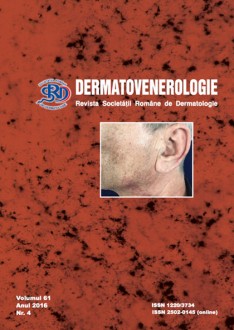Introduction. Specialty literature mentions in the pathogenesis of the disorder, besides the sexual and genetic hormonal factors, the influence of the resistance to insulin, microvascular insufficiency and inflammatory anomalies.
Material and methods. We have conducted a prospective observational study on a group of 30 patients with androgenetic alopecia aged between 30 and 60, comparatively with a control group of patients without appendage damage, in order to evaluate the prevalence of insulin peripheral resistance syndrome. The following clinical and biological parameters were analyzed: age, blood pressure, carbohydrate profile, respectively the evaluation of insulin resistance: fasting blood sugar, insulinemia, serum C peptide, HOMA-IR (homeostasis model assessment of insulin-resistance) and adeno-peptine.
Results. Type 2 sugar diabetes and basal hyperglycemia were present in 2 patients (10%) compared to only one case (3.3%) with fasting hyperglycemia in the control group. The HOMAR-IR insulin resistance model had defining values in 14 cases (46.6%), and in the control group in 6 cases (20%). Insulin values of over 25 μUI/ml (normal values 2-25μUI/ml) were detected in 2 patients in the study group in concordance with C – peptide raised
values (normal values 0.5-3.2).
The value of adiponectine (normal parameters in women: 8.5 mg/L) was of 4-7 mg/L in 10 patients (33%) and < 4mg/L in 6 patients (20%) in the study group and 2 (6,66%) patients in the control group (in concordance with the HOMAR-IR model).
Conclusions. The study confirms the increased prevalence of insulin resistance syndrome in women with androgenetic alopecia, the results being comparable with previous literature data reported in male patients.


